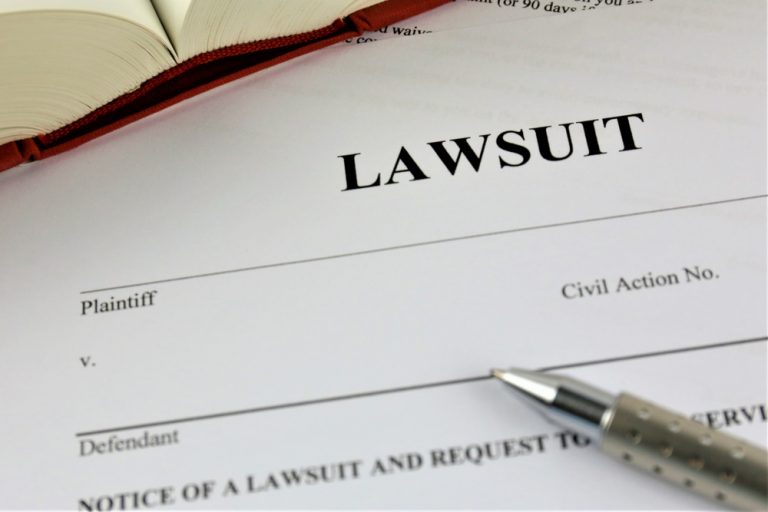What To Know About Website Accessibility Claims
What To Know About Website Accessibility Claims
The new battleground for Plaintiffs filing ADA accessibility cases involves claims of barriers not in physical space but in cyber space. The Plaintiffs’ bar has become more aggressive in filing claims asserting that public webpages that are not accessible to disabled users violate Title III of the Americans with Disabilities Act (“ADA”). The body responsible for enforcing the ADA, the Department of Justice (DOJ), has delayed its proposed amended regulations to the law, which would provide some guidance on this issue. This has left an increasingly litigated issue open for the Courts to interpret how Title III of the ADA applies to business websites, leading to inconsistent legal decisions. Businesses with a cyber presence need to anticipate and – more importantly – prepare to deal with website accessibility claims.
The ADA in Cyber Space
The ADA was not designed with the cyber universe in mind. Rather, the theory that underpins it was designed for the physical world. Title III of the ADA prohibits discrimination on the basis of disability in places of public accommodation, including physical stores, hotels, restaurants and like public accommodations. It also requires new or remodeled public places, as well as privately owned commercial facilities, to comply with specific ADA standards.
What was in the past viewed as a law protecting those utilizing physical spaces is now viewed through the more nebulous lens of cyber space. At first blush, it may be fair to conclude that the ADA has no place online given the absence of physical restrictions in the cyber world. However, comments from the DOJ and rulings from the courts make such a conclusion erroneous. This evolution of the online world raises challenging compliance issues against an ever-changing technological landscape. Further, despite society’s increased dependence on the internet, the ADA (enacted in 1990) and its regulations, to the extent they apply, have been slow to catch up.
Given the trajectory of this issue, businesses should immediately become familiar with the risk of ADA website accessibility claims, and the ways in which they can be impacted by such claims. When feasible, an ounce of prevention in this area can offer a great value down the line when serial ADA filers come calling. For example, Andres Gomez, who claims to be legally blind in his court filings, has been quietly filing ADA website accessibility actions in the Southern District of Florida for several years. He has sued many name brand retailers and many of those companies have felt they had no choice but to settle the claims with Mr. Gomez.
Title III is enforced in two main ways: first, individuals may bring a private action against a business under Title III for injunctive relief and may, at the court’s discretion, recover attorneys’ fees. Second, the DOJ may bring (or intervene in) a lawsuit to obtain monetary damages and/or equitable relief. The DOJ may also impose substantial civil penalties for violations of Title III. The harsh realities of the vague legal landscape has led some businesses to opt to avoid potential stiff monetary penalties by settling website accessibility cases and agreeing to provide increased access to their websites for those who are disabled.
Court Rulings Offer Little Clarity at This Time
Courts nationwide have not reached a consensus on the interpretation of what constitutes “places of public accommodation.” Some courts have looked at the examples provided in the definition of places of public accommodations and found them to all be physical places, concluding that a plaintiff must therefore allege discrimination in the physical not cyber world. However, other courts have taken a broader approach by holding that the ADA may apply to services and goods that are “not physically provided to customers,” but only if such services or goods have a sufficient nexus to an actual tangible place of accommodation.
For example, in National Federation of the Blind v. Target Corp., a California District Court allowed a lawsuit to proceed against Target, where the claim was that “the inaccessibility of the website impeded the full enjoyment of goods and services found in Target stores." This broader approach applied by the Northern District of California in the case resulted in the first published decision allowing ADA claims based on inaccessibility of a website to proceed against a private entity and consequently, gave more legal justification to Plaintiffs seeking to file these types of claims.
In a similar case, the Southern District of Florida determined that Title III does not extend to a purely commercial website where no nexus was shown between the website and a physical, concrete place of public accommodation. However, that ruling does leave the door open to those Plaintiffs who can show a nexus between the cyber and physical worlds. In fact, since this decision, Plaintiffs have merely modified their pleadings to meet the necessary standard and cyber-rooted ADA claims are being filed in the Federal Courts of Florida with some regularity.
Some courts, however, have not held to the physical nexus requirement. In Vermont, a District Court came to a different conclusion altogether when it held that Scribd, Inc. – a web-only business that hosts a digital library subscription service – can be sued under Title III for its allegedly inaccessible website. The District of Vermont reasoned that Title III’s reference to a “place of public accommodation” is ambiguous and that, as “a remedial statute,” the ADA ought to be reviewed liberally in the plaintiff’s favor.
The ultimate result of these various competing decisions is that no federal court of appeals has established consistent affirmative precedent regarding the reach of Title III of the ADA to business websites. Indeed, as evidenced here, the case law gives conflicting answers to the question of how Title III applies to the Internet.
Don’t Expect Immediate Guidance from the DOJ
In light of what’s happening in the Courts, the DOJ’s perspective on this ongoing issue is eagerly anticipated. With increased pressure, the DOJ began efforts years ago to address the applicability of the ADA to website accessibility – but progress towards formal change has been slow. The last major move by the DOJ to clarify this widespread issue came in July 2010 when it issued an Advance Notice of Proposed Rule Making on the subject of internet accessibility. Notably, in its 2010 Notice, the DOJ took the position that Title III already “reaches the Web sites of entities that provide goods and services that fall within the 12 categories of ‘public accommodations,’ as defined by the statute and regulations.” According to the 2010 Notice, the DOJ’s proposed amendments to the ADA regulations would “require public entities and public accommodations that provide products or services to the public through websites on the Internet to make their sites accessible to and usable by individuals with disabilities.” The DOJ’s extension of the ADA’s reach to this degree shouldn’t come as a surprise. The Department previously stated in the preamble to the original 1991 ADA regulations that the regulations should be interpreted to keep pace with developing technologies.
What to do to Reduce Risk
Businesses with public websites should take seriously the threat of ADA accessibility claims, if their websites are not fully accessible to those with disabilities, and should consider the following:
- Retain counsel to coordinate a website audit to evaluate your risk of an ADA website accessibility claim. Your counsel could then engage consultants to assist with the audit. Communications between the business, counsel, and the consultant would be protected by the attorney-client privilege, meaning they should not be used as evidence against the business down the road.
- Train staff on the technologies available to persons with disabilities, and how to respond to customers’ accessibility concerns.
- Offer “accessible alternatives.” One of the most effective ways to reduce the risk of an ADA lawsuit is to ensure that customer service outlets are available to assist customers who encounter difficulty utilizing the website and to respond to customers’ accessibility concerns. For example, providing a staffed telephone line for individuals to access the information, goods, and services of the website may be a good show of “best practices” to demonstrate to consumers that you are working towards improved disability accommodation.
- Integrate accessibility into a company’s infrastructure and decision-making processes. This includes selecting vendors with an eye towards their ability to provide support for accessibility issues and legal compliance. Being proactive will not only minimize litigation risk, but will also widen your customer base to include the substantial number of disabled individuals who rely on websites and digital applications to purchase goods and services.
Businesses may also want to consider adopting the standards of the WCAG 2.0 AA, which is a series of web accessibility guidelines geared towards making content accessible to a wider range of people with disabilities (the DOJ in its 2010 Notice sought public comment on such guidelines, suggesting that it may adopt these in the future). Compliance with WCAG 2.0 Level AA standards may include:
- Providing text alternatives for any non-text content so that it can be changed into other forms people need, such as large print, braille, speech, symbols or simpler language.
- Providing alternatives for time-based media.
- Creating content that can be presented in different ways (e.g., with a simpler layout) without losing information or structure.
- Making it easier for users to see and hear content by, among other things, separating foreground from background.
- Making all functionality available from a keyboard, provide users with sufficient time to read and use content, not design content in a way that is known to cause seizures and provide ways to help users navigate, find content and determine where they are on the website.
- Making text content readable and understandable to web navigation tools.
- Making web pages appear and operate in predictable ways.
- Maximizing compatibility with assistive technologies on user computers and devices.
- It’s important to note that the implementation of the guidelines can be an expensive process and they do not currently have the force of law, nor is the WCAG 2.0 AA referenced in the DOJ Notice a guarantee that they will become part of the law. But if you have a business that relies on a lot of traffic to your website, you should at least consider taking a more aggressive approach to ensuring that those with disabilities have full access to what you offer online.
None of the activities above constitute a silver bullet but they can certainly help to reduce the risk of a lawsuit, and may provide a defense to any website accessibility lawsuits that are filed against your company, thus allowing the focus to stay on your core product or service.









